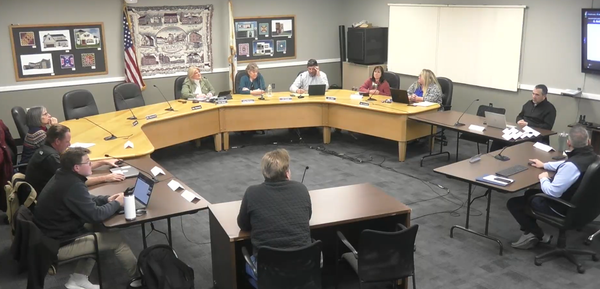Burlington Stream Cleaning Program Keeps Waterways Clear, Urges Residents to Stop Illegal Dumping
Burlington’s Conservation staff is clearing local streams of trash—14 tires, an engine, even a swing set—and urges residents: never dump in drains or wetlands.
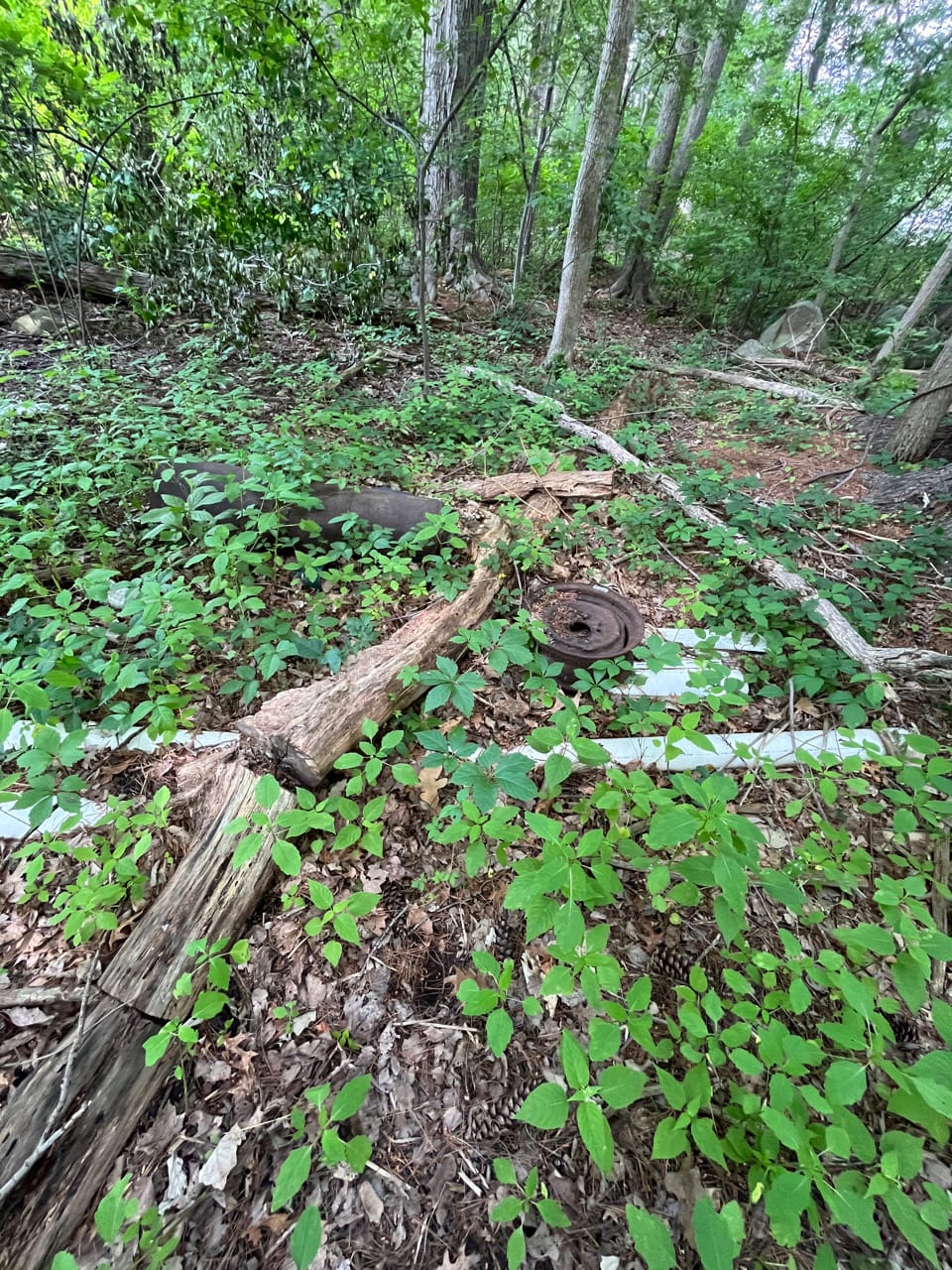
Staff from Burlington's Conservation Department this summer have been out and about, cleaning streams all around Burlington.
This is part of a program, initiated in part by retired Conservation Administrator John Keeley in 1991, that aims to keep Burlington's many waterways clear of debris. The department's summer staff wades into the town's shallow waterways (which is most of them, excluding deeper ones like Vine Brook) to remove debris from the streams and adjacent wetlands. This is a hand-cleaning program and distinct from the vactor cleaning done by the Department of Public Works, which does some limited sand and sediment removal each year or two.
They used to trim the trees along the waterways, said Conservation Administrator Eileen Coleman, but, "We've pulled back on that a little bit over the years because it's just healthier for the streams if we leave them." She went on to add that, while the town used to dredge streams, they've discontinued the practice. "It is bad for the health of a stream to scrape off the substrate," she said. "It frequently destabilizes the stream bed and destroys the aquatic habitat for the plants and animals that live there. It can exacerbate stream bank erosion, so streams flowing through people's properties could relocate more quickly than they might naturally, sometimes leading to loss of land. So we remove items that absolutely should not be there and branches and logs and other debris that could block flow. We try to achieve a happy medium, so water can flow, water is relatively clear and the streams remain stable."
Most of what they remove is trash, said Coleman. And you might be surprised at the things they find. Sometimes it's items that have washed down – such as tennis balls at Sawmill, washed down from Rahanis Park – but many of the items they clean up have been dumped intentionally.
This year, stream cleaners have removed 14 tires, half an engine, and the gutter from a home; last year they came across a complete swing set that had been dismantled and dumped in the woods. In previous years they've had to remove items from a cache of chewing tobacco canisters to an entire shed.
Other items wash down from storm drains; Coleman recounted a story of stream cleaners finding hundreds of bags of dog poop. "What was clearly happening was that somebody on their dog walk every single day was just shoving them into the storm drain thinking, 'That's out of sight, out of mind.' But it just gets discharged 20 feet away into the wetland. Hundreds and hundreds of bags!"
The storm drain system is intimately connected with the streams and wetlands and, since this year's summer crew is so efficient they'll soon begin testing the water coming from the outfalls – the exit pipes that discharge water from the storm drain system – for things like pH and the presence of surfactants, E. coli, and more, to be sure it's sufficiently clean to run through the town's streams. Coleman said the stormwater system is often the biggest source of pollution in waterways.
The Conservation Department has a list of waterways they clean out each year. But if you notice blockages or debris in need of cleaning in a stream near you, call 781-270-1655 or email conservation@burlington.org to let them know.
For information on how to dispose of unwanted trash, large items, and more, visit the Trash & Recycling page of the DPW Website or call them at 781-270-1670.
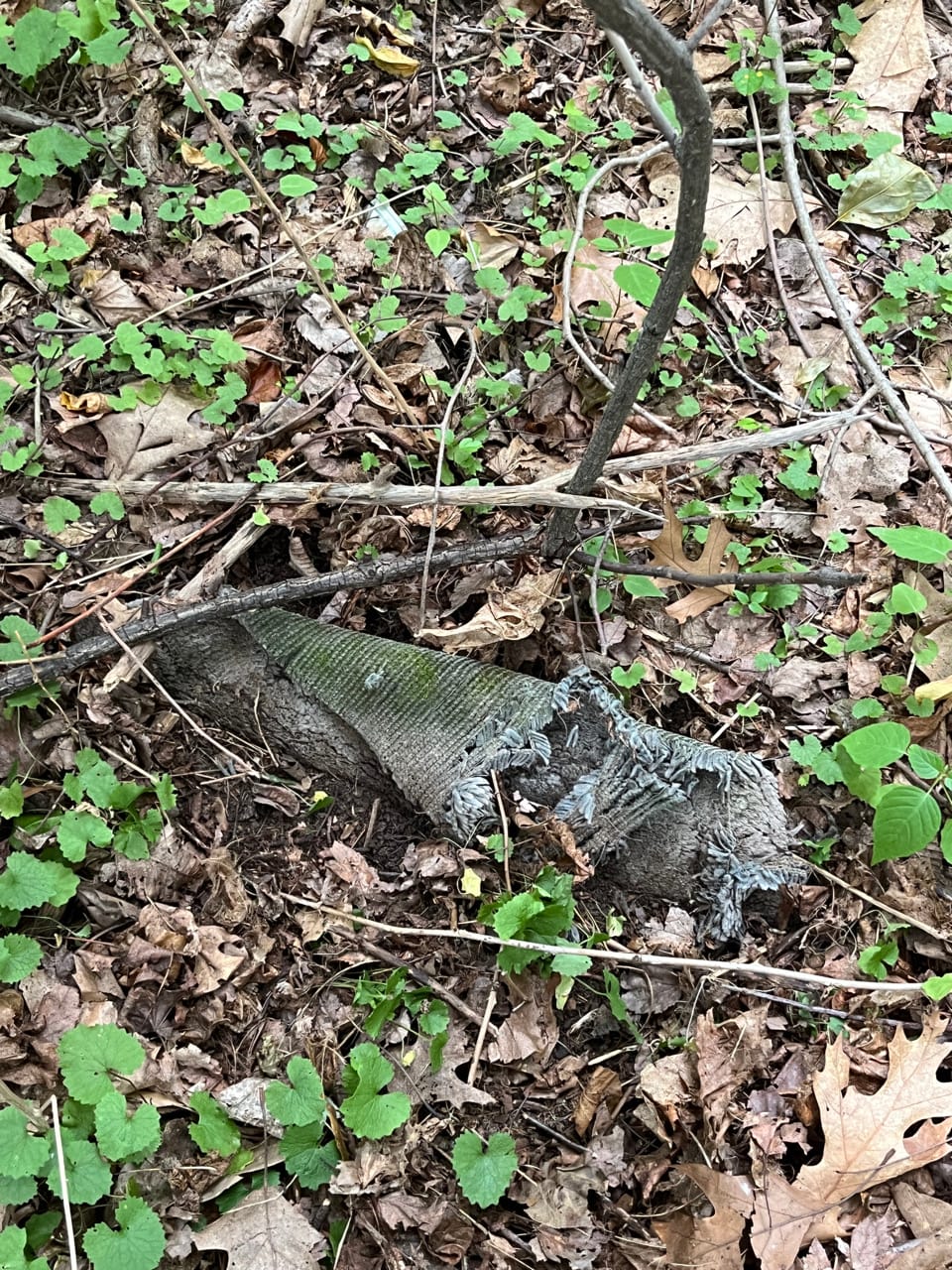
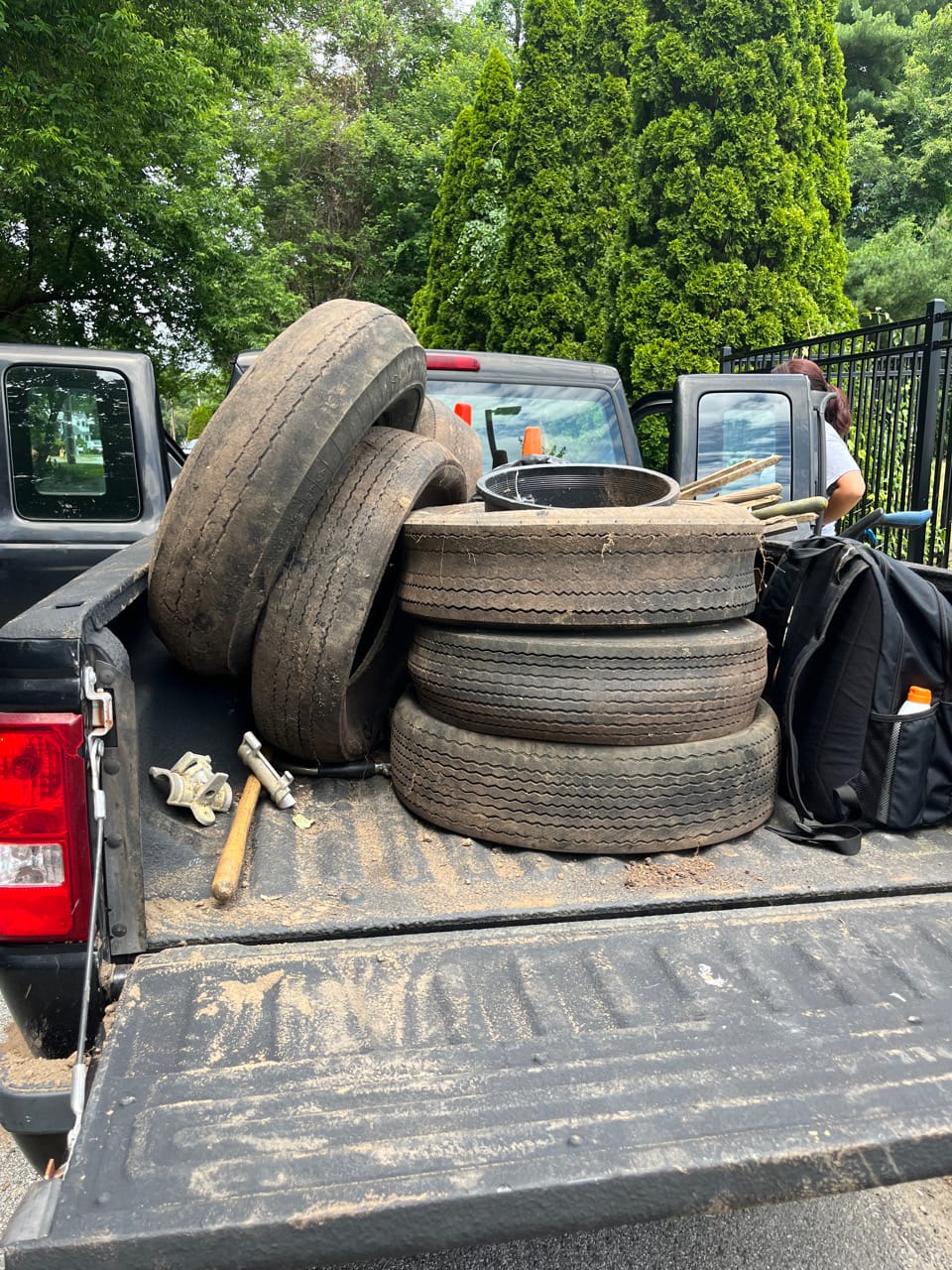
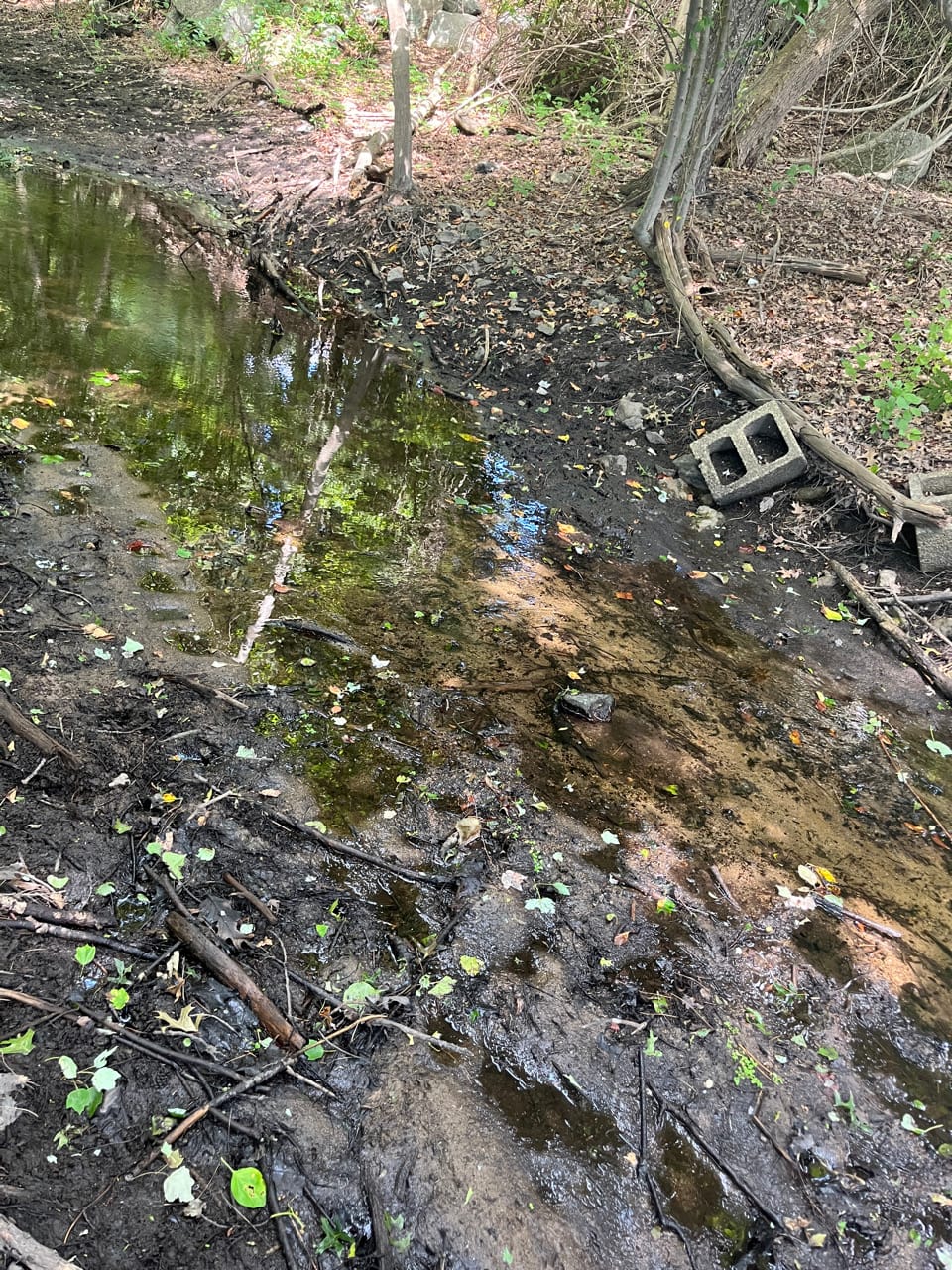
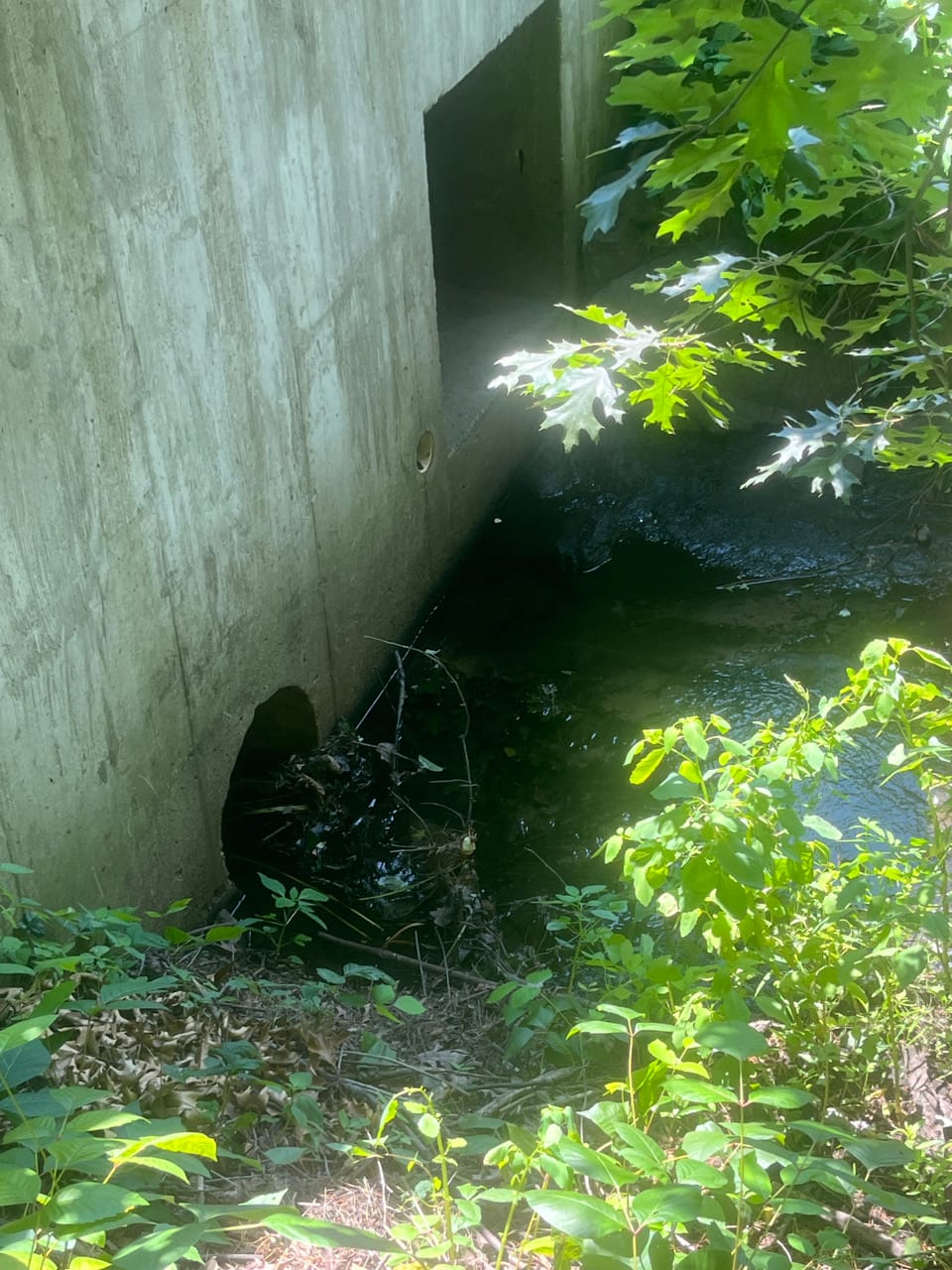
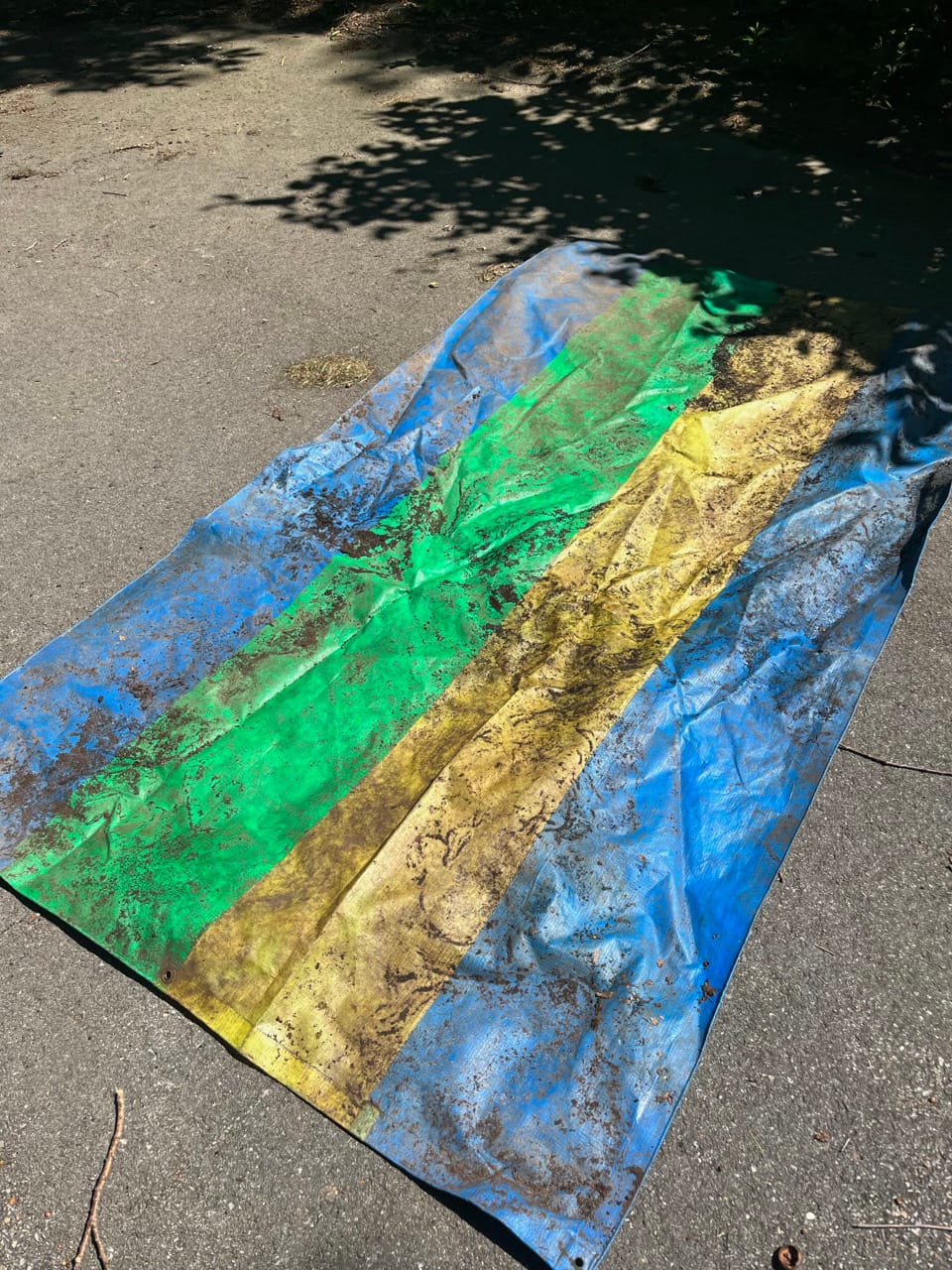
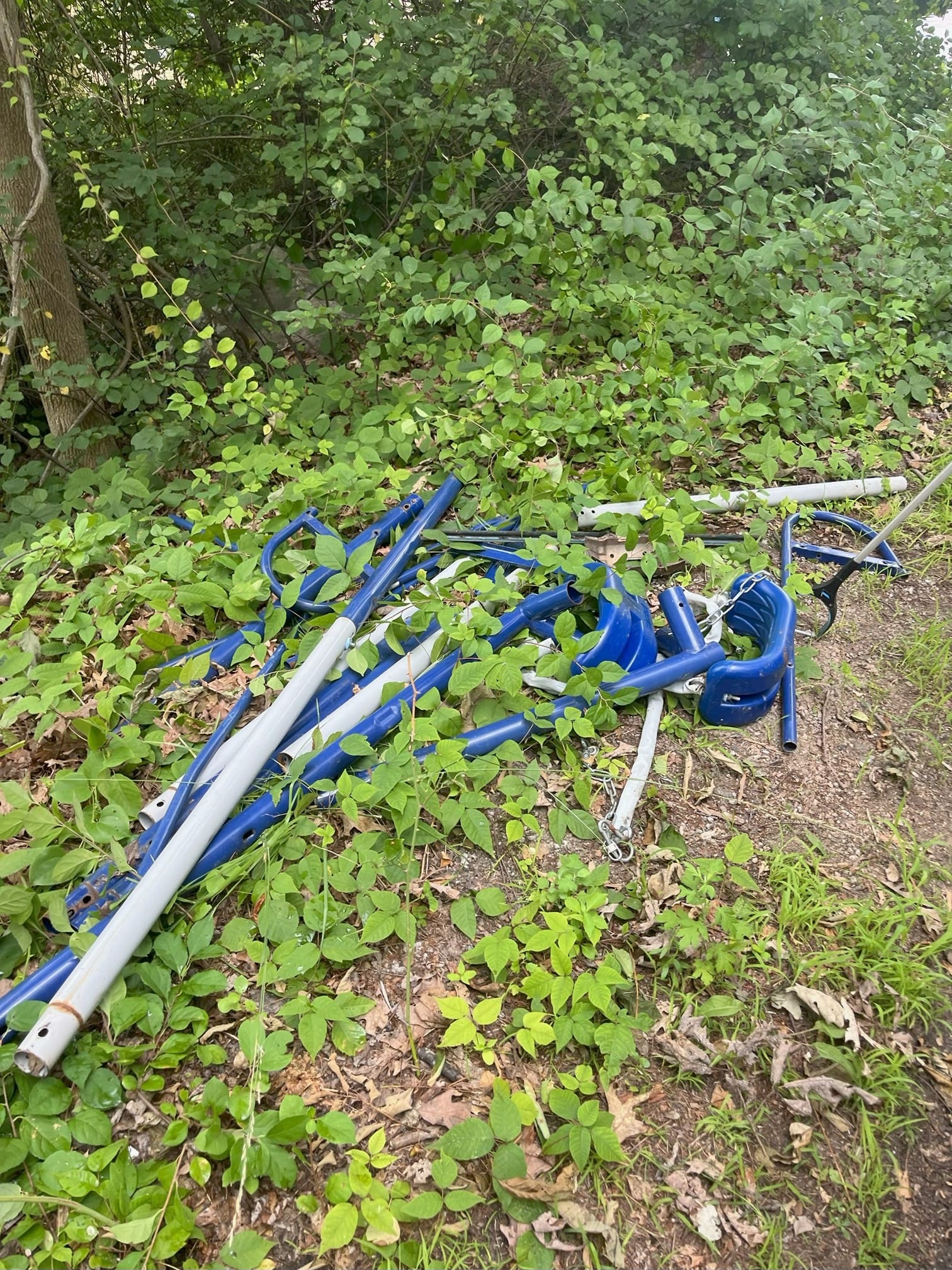
Left to right, top to bottom: A roll of carpet removed from a wetland; tires, wheels, and a bag of trash from a single site; cinderblocks in the stream; a blockage of twigs cleared; a tarp; a dismantled swing set. Photos courtesy of Eileen Coleman/Burlington Conservation Department.




